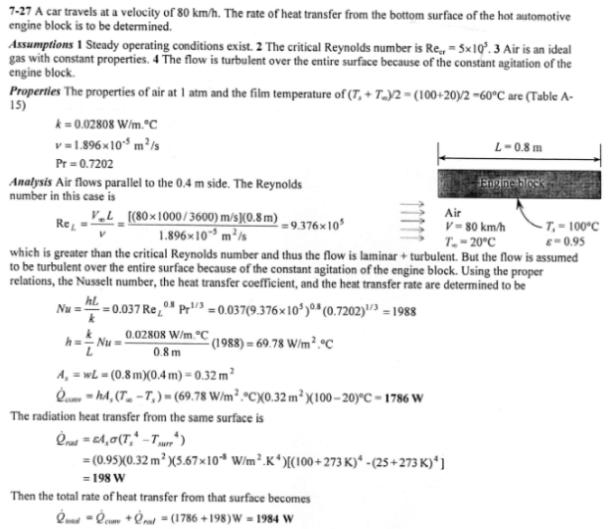Consider a hot automotive engine, which can be approximated as a 0.5-m-high, 0.40-m-wide, and 0.8-m-long rectangular block. The bottom surface of the block is at a temperature of 100 C and has an emissivity of 0.95. The ambient air is at 20 C, and the road surface is at 25 C. Determine the rate of heat transfer from the bottom surface of the engine block by convection and radiation as the car travels at a velocity of 80 km/h. Assume the flow to be turbulent over the entire surface because of the constant agitation of the engine block.

Consider a hot automotive engine, which can be approximated as a 0.5-m-high, 0.40-m-wide, and 0.8-m-long rectangular block. The bottom surface of the block is at a temperature of 100 C and has an emissivity of 0.95. The ambient air is at 20 C, and the road surface is at 25 C. Determine the rate of heat transfer from the bottom surface of the engine block by convection and radiation as the car travels at a velocity of 80 km/h. Assume the flow to be turbulent over the entire surface because of the constant agitation of the engine block.
